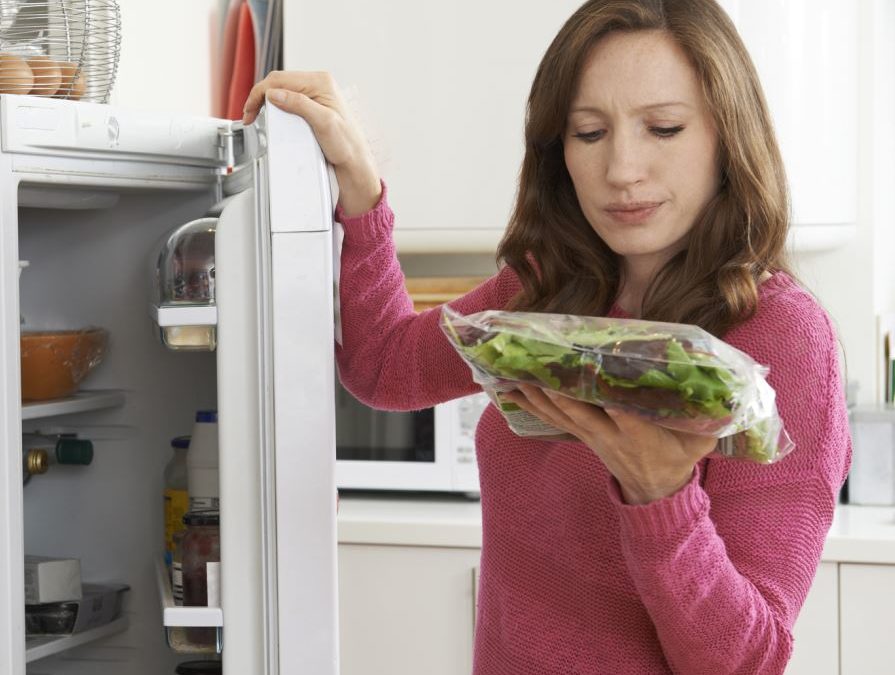What do date labels actually mean and have you ever been confused by the “Best if Used By” date? If so, you’re not alone. It turns out one of the major contributors to food waste is confusion related to the various dates on foods. America wastes 40% of its food, but a lot of what we toss out is still perfectly safe to eat. And, according to the Food Manufacturing Institute (FMI), about 44% of food waste sent to landfills comes from consumers, and they state that addressing consumer confusion around product date labeling could reduce total national food waste by 8%. When it comes down to it, most Americans are just plain confounded by the “sell by” or “use by” dates. Is the food still safe to eat? The answer is: Generally, yes.
Streamlining Date Labels
Earlier this year FMI and the Grocery Marketing Association (GMA) launched initiatives to streamline and simplify “expiration dates.” The organizations stated that there are more than 10 different date label variations on packages – such as “Sell By,” “Use By,” “Expires On,” “Best Before,” “Better if Used By,” or “Best By.” No wonder we’re confused. FMI and GMA are proposing voluntary guidelines to reduce packaging terms to just two standard phrases:
- “BEST If Used By” describes product quality, where the product may not taste or perform as expected, but is safe to use or consume.
- “USE By” applies to the few products that are highly perishable and/or have a food safety concern over time. These products should be consumed by the date listed on the package – and disposed of after that date.
FMI and GMA are hoping for widespread adoption by the summer of 2018.
How are Date Labels Determined?
But why are we so fixated on these date labels? Certainly, we’ve been incorrectly trained over the years that stuff goes bad on that date so it’s not worth the risk of eating. But most of us don’t even think about how that date was arrived at. There are a number of ways these dates are determined. These include microbial challenge studies, mathematical modeling tools and static tests. For the most part, these are generalized tests of a particular product to try to determine how long the food is likely to be safe from an effective dose of a pathogen. (That is, when the pathogen is present in quantities to make you sick).
The problem with these approaches though is that every product is going to experience different conditions from harvest or production at the pallet level. Therefore, the remaining freshness “date” of the product is likely to be different for each product to some degree. As such, the dates are only guidelines, regardless if they’re a “Sell By,” “Best if Used By” or “Use By” date.
What Impacts Freshness?
When it comes to freshness and food safety, it really all depends on the time and temperature, which vary at the pallet level. Two pallets of strawberries or lettuce, even if they are harvested at the same time from the same location, may experience very different processing which can impact both freshness and food safety. If something is held at a higher temperature for a given length of time, the impact on freshness and safety increase logarithmically. So, to determine the remaining freshness of food you need to know the conditions and temperature of product throughout the entire supply chain, from harvest to the retailer, to ensure that it was stored and processed properly and has adequate remaining shelf life so that the customer can confidently consume it before food safety and freshness become an issue. By having time and temperature data we can dynamically calculate the remaining shelf life so retailers can prioritize shipments and stock rotation to deliver peak freshness.
This gets a bit more complicated for things like bagged produce (e.g. salads) where multiple products end up in the same bag. In this case, the freshness is determined by the product with the shortest remaining shelf life.
A True Measure of Freshness
At Zest, we’ve developed a way to address these challenges with Zest Fresh. We can dynamically determine the remaining shelf life of a product and provide traceability to ensure proper handling throughout the cold chain. This reduces waste by providing consumers with safe and fresh produce and provides a freshness date that is tied to that specific product, not a generic guess.
By the way, if the product looks or smells funny, still best to do what your mom probably taught you: When in doubt, throw it out. But with the technology we have today, you may find yourself doubting the date label a lot less.


